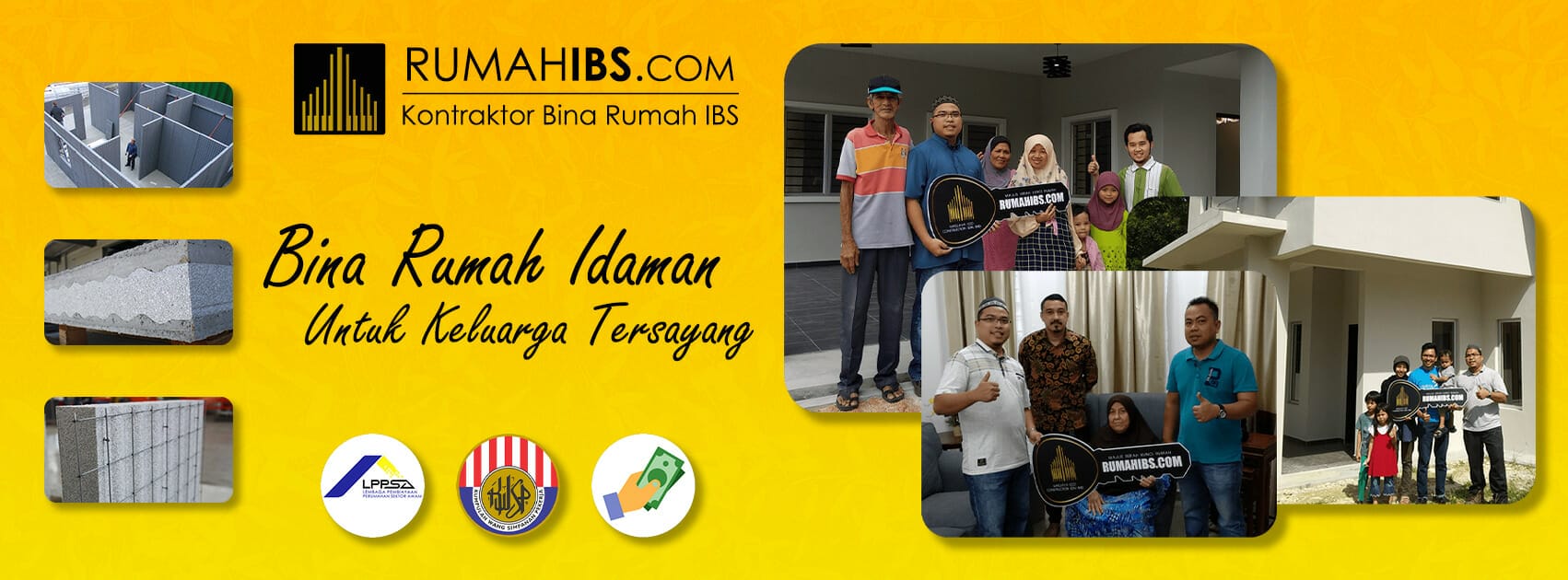Navigating House Construction in 2024: From IBS Homes to DIY Building in Selangor
1. Introduction
Welcome to the exciting world of house construction in Malaysia in 2024! Whether you’re planning to build your dream home from scratch or considering renovations to transform your current space, understanding the ins and outs of house construction is crucial. In this article, we’ll delve into the various aspects of house construction, from labor costs to innovative building technologies like the Industrialized Building System (IBS).
Navigating the Malaysian Housing Market Landscape
The Malaysian housing market is dynamic and ever-evolving, influenced by factors such as economic trends, government policies, and societal needs. As we step into 2024, it’s essential to take stock of the current landscape to make informed decisions about house construction projects.
To provide you with a clearer picture, let’s take a look at some key trends shaping the Malaysian housing market in 2024:
| Trend | Description |
|---|---|
| Sustainable Housing | Increasing emphasis on eco-friendly and energy-efficient homes to minimize environmental impact. |
| Digitalization | Integration of technology in house construction processes, such as virtual reality for design and planning. |
| Urbanization | Growing urban populations driving demand for housing in city centers, leading to higher land prices. |
| Affordable Housing | Government initiatives to address the issue of affordable housing, providing opportunities for homebuyers. |
Why Understanding House Construction Matters
Building a house is a significant investment, both financially and emotionally. By gaining a deeper understanding of the house construction process, you empower yourself to make informed decisions every step of the way. From budgeting effectively to ensuring quality craftsmanship, knowledge is key to achieving your vision for your dream home.
So, whether you’re a first-time homeowner embarking on a new build or a seasoned investor exploring renovation possibilities, join us on this journey through the world of house construction in Malaysia. Together, let’s uncover valuable insights and practical tips to make your housing dreams a reality in 2024 and beyond.

DALL·E 2023 10 16 17.15.39 Photo of a young Malaysian couple discussing with a bank officer symbolizing the process of securing a housing loan
2. Understanding the Building Process
Embarking on a house construction project can feel like stepping into uncharted territory, but fear not! Understanding the building process is the first step towards realizing your dream home. In this section, we’ll walk you through the typical steps involved in building a house and shed light on the importance of key considerations such as hiring reputable contractors and embracing innovative building technologies like the Industrialized Building System (IBS).
The Journey of Building a House
Building a house is a journey filled with excitement, challenges, and countless decisions. Here’s a simplified overview of the typical steps involved in the building process:
- Planning and Design: This initial phase lays the foundation for your project. Work with architects and designers to conceptualize your dream home, considering factors such as layout, aesthetics, and functionality.
- Obtaining Permits: Before construction can commence, you’ll need to obtain the necessary permits and approvals from local authorities. This ensures compliance with building regulations and safety standards.
- Site Preparation: Once permits are in hand, the site preparation begins. This includes clearing the land, leveling the ground, and preparing the foundation for construction.
- Construction: With the site prepared, construction can finally begin! Skilled laborers, overseen by experienced contractors, work diligently to bring your vision to life, erecting the structure of your home from the ground up.
- Finishing Touches: As the construction nears completion, attention turns to the finishing touches that will make your house feel like a home. This includes interior fittings, painting, and landscaping.
- Quality Assurance: Before handing over the keys, thorough quality assurance checks ensure that every aspect of the construction meets safety and quality standards.
- Handover and Moving In: Finally, the moment you’ve been waiting for arrives – the handover of your new home! After completing all necessary paperwork, you can move in and begin creating lasting memories in your dream abode.
Importance of Hiring Reputable Contractors
Choosing the right contractors can make or break your house construction experience. Here are a few reasons why hiring reputable contractors is essential:
- Expertise and Experience: Reputable contractors bring years of experience and expertise to the table, ensuring that your project is in capable hands.
- Quality Craftsmanship: From skilled laborers to reliable subcontractors, reputable contractors prioritize quality craftsmanship, resulting in a well-built and durable home.
- Timely Completion: Reliable contractors adhere to schedules and deadlines, minimizing delays and ensuring timely completion of your project.
- Transparency and Communication: Open communication and transparency are hallmarks of reputable contractors, keeping you informed and involved throughout the construction process.
By investing in reputable contractors, you can enjoy peace of mind knowing that your house construction project is in good hands.
Embracing Innovative Building Technologies
Innovation is revolutionizing the construction industry, and one such innovation is the Industrialized Building System (IBS). Here’s why IBS is gaining traction in the world of house construction:
| Advantages of IBS |
|---|
| Faster Construction: IBS components are manufactured off-site and assembled on-site, reducing construction time. |
| Cost Efficiency: Despite initial setup costs, IBS can result in long-term cost savings through reduced labor and material expenses. |
| Quality Control: The controlled environment of IBS factories ensures consistent quality and precision in construction. |
| Sustainability: IBS promotes sustainable practices by minimizing construction waste and optimizing resource usage. |
By embracing innovative technologies like IBS, homeowners can enjoy faster, more cost-effective, and sustainable house construction solutions.
Understanding the building process lays the foundation for a successful house construction project. Armed with knowledge and insights, you’re well-equipped to embark on your journey towards building your dream home in Malaysia.
3. Exploring Costs in House Construction
Embarking on a house construction project is undoubtedly an exciting endeavor, but it’s essential to have a clear understanding of the associated costs. In this section, we’ll delve into the various costs involved in house construction in Malaysia in 2024, from labor expenses to land prices, empowering you to budget effectively and make informed decisions.
Analyzing Labor Costs
Labor costs are a significant component of house construction expenses, encompassing wages for skilled and unskilled workers involved in the construction process. In 2024, labor costs in Malaysia continue to fluctuate based on factors such as demand, supply, and economic conditions.
Here’s a breakdown of some common labor costs involved in house construction:
- Carpentry: Carpentry work, including framing, roofing, and interior fittings, accounts for a significant portion of labor expenses.
- Masonry: Bricklaying, plastering, and tiling are essential masonry tasks that contribute to overall labor costs.
- Electrical and Plumbing: Installing electrical wiring, fixtures, and plumbing systems requires skilled labor and adds to construction expenses.
- Painting and Finishing: Applying paint, varnish, and finishing touches to walls and surfaces also involves labor costs.
Understanding labor costs allows you to budget effectively and negotiate fair rates with contractors.
Discussion on Land Prices and Building Costs
Land prices and building costs are intertwined factors that significantly impact house construction expenses. In Malaysia, land prices vary widely based on factors such as location, accessibility, and zoning regulations. Urban areas, especially in high-demand cities like Kuala Lumpur, tend to have higher land prices compared to rural areas.
When estimating building costs, it’s essential to consider factors such as:
- Size and Layout: The size and layout of your desired home influence construction costs, with larger and more complex designs typically requiring higher budgets.
- Materials and Finishes: The choice of materials and finishes, such as flooring, countertops, and fixtures, directly impacts construction expenses.
- Labor Rates: Labor rates vary depending on the skill level of workers, market demand, and regional factors.
By analyzing land prices and building costs, you can develop a realistic budget for your house construction project and avoid financial surprises along the way.
Factors Influencing Overall Construction Costs
Several factors contribute to the overall costs of house construction in Malaysia in 2024. Understanding these factors enables you to make informed decisions and prioritize expenditures based on your budget and preferences.
Here are some key factors influencing construction costs:
| Factors | Description |
|---|---|
| Location | Urban areas typically have higher land prices and construction costs compared to rural or suburban areas. |
| Design Complexity | Intricate designs and custom features may increase construction costs due to additional materials and labor. |
| Building Regulations | Compliance with building codes and regulations may incur additional expenses for permits and inspections. |
| Economic Conditions | Economic fluctuations can impact material prices, labor availability, and overall construction costs. |
| Material Choices | The selection of materials, from basic to high-end options, affects construction costs and quality of the build. |
By considering these factors and conducting thorough research, you can navigate house construction costs effectively and ensure a successful project outcome.
Exploring costs in house construction provides valuable insights into the financial aspects of your project. By analyzing labor expenses, land prices, and overall construction costs, you can develop a realistic budget and make informed decisions every step of the way.

DALL·E 2023 10 17 11.20.50 Photo of a 3D printed house model on a table with blueprints and construction tools around symbolizing modern construction methods
4. Building on Self-Owned Land in Selangor
Building a house on self-owned land in Selangor offers numerous advantages, from greater control over design and construction to potential cost savings. In this section, we’ll explore the process of building on self-owned land, discuss the advantages and challenges, and provide practical tips for a successful project.
Advantages of Building on Self-Owned Land
Building on self-owned land in Selangor comes with several benefits that appeal to homeowners and investors alike:
- Ownership Control: When you own the land, you have full control over the design, layout, and features of your home, allowing you to customize it to your preferences.
- Cost Savings: By eliminating the need to purchase land separately, building on self-owned land can result in significant cost savings, especially in areas with high land prices like Selangor.
- Investment Value: Property ownership is a valuable asset that can appreciate over time, offering long-term financial benefits and potential returns on investment.
- Flexibility: Building on self-owned land provides flexibility in terms of project timeline, allowing you to plan and execute the construction process at your own pace.
Understanding the Process
Before breaking ground on your construction project, it’s essential to understand the process of building on self-owned land in Selangor. Here’s a simplified overview of the typical steps involved:
- Land Assessment: Conduct a thorough assessment of your land to determine its suitability for construction, considering factors such as soil condition, topography, and zoning regulations.
- Obtaining Approvals: Obtain the necessary approvals and permits from local authorities, including planning permission and building permits, to ensure compliance with regulations.
- Engaging Professionals: Hire professionals such as architects, engineers, and contractors to assist with the design, planning, and execution of your construction project.
- Construction Phase: Once approvals are obtained and plans are finalized, construction can commence. Work closely with your team of professionals to oversee the construction process and ensure quality craftsmanship.
- Completion and Handover: Upon completion of construction, conduct final inspections to ensure compliance with building standards before officially taking possession of your new home.
Challenges and Considerations
While building on self-owned land in Selangor offers numerous advantages, it’s essential to be aware of potential challenges and considerations:
- Regulatory Compliance: Navigating the regulatory landscape, including zoning regulations and building codes, can be complex and time-consuming.
- Infrastructure Requirements: Ensuring access to essential infrastructure such as water, electricity, and sewage systems may require additional planning and investment.
- Cost Management: While building on self-owned land can result in cost savings, it’s crucial to budget effectively and manage expenses throughout the construction process to avoid overspending.
- Project Management: Managing a construction project requires time, effort, and coordination among various stakeholders, including professionals, contractors, and suppliers.
By understanding the process, anticipating challenges, and implementing effective strategies, you can successfully build on self-owned land in Selangor and turn your vision of a dream home into reality.
5. Renovation Considerations and Costs
Renovating your home is an exciting opportunity to breathe new life into your living space and enhance its functionality and aesthetics. However, before diving into renovations, it’s crucial to consider various factors and understand the associated costs. In this section, we’ll explore key considerations for home renovations in Malaysia, analyze renovation costs, and provide practical tips for planning and budgeting.
Understanding Renovation Costs
Renovation costs can vary widely depending on factors such as the extent of renovations, the quality of materials used, and labor expenses. In Malaysia, renovation costs are typically calculated per square foot or per square meter, making it essential to estimate the total area to be renovated accurately.
Here’s a breakdown of common renovation costs per square foot in Malaysia in 2024:
| Renovation Component | Average Cost per Square Foot (MYR) |
|---|---|
| Basic Renovations | 50 – 100 |
| Mid-range Renovations | 100 – 200 |
| High-end Renovations | 200+ |
Understanding renovation costs allows you to set a realistic budget and prioritize renovations based on your preferences and financial capabilities.
Factors Influencing Renovation Costs
Several factors influence renovation costs, making it essential to consider these factors when planning your renovation project:
- Scope of Renovations: The extent of renovations, including structural changes, additions, and upgrades, significantly impacts costs.
- Materials and Finishes: The choice of materials and finishes, such as flooring, countertops, and fixtures, affects renovation expenses.
- Labor Costs: Skilled labor is essential for quality renovations, and labor costs contribute to the overall renovation budget.
- Project Complexity: Complex renovation projects requiring specialized skills or equipment may incur higher costs.
- Location: Renovation costs may vary depending on the location, with urban areas typically having higher labor and material prices.
By understanding these factors, you can make informed decisions and plan your renovation project effectively.
Tips for Budgeting and Planning Renovations
Effective budgeting and planning are crucial for the success of any renovation project. Here are some practical tips to help you budget and plan renovations in Malaysia:
- Define Your Goals: Clearly define your renovation goals and priorities to focus your budget on areas that matter most to you.
- Research and Compare Prices: Research materials, labor rates, and renovation costs in your area to get a better understanding of pricing trends and options.
- Set a Realistic Budget: Set a realistic budget based on your financial situation and prioritize renovations accordingly to stay within budget.
- Obtain Multiple Quotes: Obtain quotes from multiple contractors and suppliers to compare prices and negotiate for the best deals.
- Plan for Contingencies: Factor in contingencies for unexpected expenses or changes in the renovation plan to avoid budget overruns.
- Communicate Clearly: Maintain open communication with your contractor throughout the renovation process to ensure alignment and avoid misunderstandings.
By following these tips, you can navigate the renovation process effectively and achieve your desired outcomes while staying within budget.
Renovating your home is an exciting journey that requires careful planning and consideration. By understanding renovation costs, considering key factors, and implementing practical budgeting and planning strategies, you can embark on your renovation project with confidence and transform your home into a space that reflects your style and personality.

DALL·E 2023 10 16 17.15.43 Photo of a hand holding a house key with a keychain in the shape of a house representing the achievement of obtaining a housing loan
6. Financing Options for House Construction
Embarking on a house construction project often requires significant financial investment, and navigating the various financing options available is crucial for turning your dream home into reality. In this section, we’ll explore different financing options for house construction in Malaysia, including loans, grants, and alternative funding sources, empowering you to make informed decisions and secure the necessary funds for your project.
Exploring Loan Options
Taking out a loan is a common method of financing house construction projects in Malaysia. Several types of loans are available to homeowners and investors, each with its own terms, interest rates, and eligibility criteria.
Here’s an overview of some common loan options for house construction:
| Loan Type | Description |
|---|---|
| Home Construction Loan | Specifically designed for financing house construction projects, these loans provide funds in stages based on the construction progress. |
| Mortgage Loan | Mortgage loans can be used to finance both land purchase and house construction, with repayment terms typically spanning several years. |
| Personal Loan | Personal loans offer flexibility in terms of usage, including house construction, but may come with higher interest rates and shorter repayment periods. |
| Government Housing Grants | Various government initiatives offer housing grants and subsidies to eligible individuals and families, providing financial assistance for house construction. |
Understanding the features and requirements of each loan option enables you to choose the best financing solution for your house construction project.
Tips for Securing Financing
Securing financing for house construction requires careful planning and preparation. Here are some practical tips to help you navigate the financing process effectively:
- Assess Your Financial Situation: Evaluate your financial position, including income, savings, and existing debts, to determine how much you can afford to borrow.
- Research Lenders: Research banks, financial institutions, and government agencies offering housing loans and grants to compare interest rates, terms, and eligibility criteria.
- Gather Documentation: Prepare necessary documentation, such as proof of income, identification documents, and construction plans, to support your loan application.
- Improve Credit Score: Maintain a good credit score by making timely payments and reducing outstanding debts, as a higher credit score increases your chances of loan approval and favorable terms.
- Consider Alternative Funding Sources: Explore alternative funding sources, such as crowdfunding, peer-to-peer lending, or partnerships with investors, if traditional loans are not feasible.
By following these tips and exploring various financing options, you can secure the necessary funds to bring your house construction project to fruition.
Planning for Repayment
Before finalizing your financing arrangements, it’s essential to consider how you’ll repay the borrowed funds. Make sure to factor loan repayments into your budget and consider the long-term financial implications of borrowing.
Here are some strategies for planning loan repayment:
- Budgeting: Allocate a portion of your monthly income towards loan repayments to ensure timely repayment and avoid default.
- Emergency Fund: Build an emergency fund to cover unexpected expenses and ensure you can continue making loan repayments even in challenging circumstances.
- Consider Loan Terms: Choose loan terms and repayment schedules that align with your financial goals and capabilities, balancing affordability with long-term financial sustainability.
By planning for repayment upfront, you can minimize financial stress and enjoy the journey of building your dream home with confidence.
Navigating financing options for house construction requires careful consideration and planning. By exploring loan options, securing financing, and planning for repayment, you can turn your dream of owning a home into reality and embark on the exciting journey of building your dream home in Malaysia.
7. Exploring the Drawbacks of IBS Homes
Industrialized Building System (IBS) technology has gained popularity in the construction industry for its efficiency and cost-effectiveness. However, like any construction method, IBS homes come with their drawbacks. In this section, we’ll delve into some of the disadvantages associated with IBS homes, allowing you to make an informed decision when considering this construction approach.
Limited Design Flexibility
One of the main drawbacks of IBS homes is the limited design flexibility compared to traditional construction methods. IBS components are typically prefabricated off-site according to standardized designs, which may restrict customization options for homeowners. While some degree of customization is possible, intricate designs or unique architectural features may be challenging to implement with IBS technology.
Potential Quality Issues
While IBS technology aims to streamline the construction process and improve efficiency, there is a risk of potential quality issues. Factors such as manufacturing defects, transportation damage, and improper installation can compromise the quality of IBS components, leading to structural problems or maintenance issues in the long run. Quality control measures are crucial to mitigate these risks and ensure the durability and safety of IBS homes.
Higher Initial Setup Costs
Although IBS homes may offer long-term cost savings through reduced labor and material expenses, the initial setup costs can be higher compared to traditional construction methods. Investing in the necessary infrastructure, such as manufacturing facilities and specialized equipment, requires a significant upfront investment, which may deter some developers or contractors from adopting IBS technology.
Limited Availability of Skilled Labor
IBS technology relies heavily on automated manufacturing processes and skilled workers proficient in handling specialized equipment. However, the availability of such skilled labor may be limited, especially in regions where IBS adoption is relatively low. This can pose challenges for contractors or developers looking to implement IBS technology in their projects, leading to delays or increased reliance on external expertise.
Conclusion
While IBS technology offers several advantages in terms of efficiency, cost-effectiveness, and sustainability, it’s essential to consider the drawbacks associated with this construction approach. Limited design flexibility, potential quality issues, higher initial setup costs, and the availability of skilled labor are factors that warrant careful consideration when evaluating the suitability of IBS homes for your project. By weighing the pros and cons and conducting thorough research, you can make an informed decision that aligns with your objectives and priorities in house construction.

DALL·E 2023 10 16 14.06.33 Photo of an architectural blueprint of a house with construction tools around it highlighting the planning phase of building a home
8. Conclusion: Making Informed Decisions
As we conclude our exploration of house construction in Malaysia in 2024, it’s essential to reflect on the valuable insights gained and the importance of making informed decisions throughout the construction journey. From understanding the building process to considering renovation costs and exploring innovative technologies like the Industrialized Building System (IBS), each aspect plays a crucial role in achieving your housing goals.
Recap of Key Points
Let’s recap some of the key points discussed in this article:
- Understanding the Building Process: We explored the typical steps involved in building a house, emphasizing the importance of hiring reputable contractors and embracing innovative building technologies like IBS.
- Exploring Costs in House Construction: By analyzing labor costs, land prices, and overall construction costs, we gained a better understanding of the financial aspects of house construction projects.
- Building on Self-Owned Land in Selangor: Building on self-owned land offers advantages such as ownership control and potential cost savings, but it’s essential to navigate regulatory requirements and consider infrastructure needs.
- Renovation Considerations and Costs: Renovating your home allows you to enhance its functionality and aesthetics, but careful planning and budgeting are crucial to ensure a successful outcome.
- Exploring the Drawbacks of IBS Homes: While IBS technology offers efficiency and cost-effectiveness, it’s essential to consider limitations such as limited design flexibility and potential quality issues.
Making Informed Decisions
Armed with knowledge and insights gained from this article, you’re better equipped to make informed decisions when embarking on house construction or renovation projects in Malaysia. Whether you’re building your dream home from scratch, renovating your existing space, or exploring innovative construction technologies, conducting thorough research, setting realistic budgets, and working with reputable professionals are key to success.
Moving Forward
As you embark on your house construction journey, remember that it’s not just about building structures – it’s about creating homes where memories are made and lives are lived. By prioritizing quality, sustainability, and innovation, you can create spaces that not only meet your needs but also contribute to the vibrant landscape of Malaysian housing.
So, as you take the next steps in your house construction or renovation project, remember to stay informed, stay inspired, and most importantly, stay excited about the possibilities that lie ahead. Your dream home awaits – let’s build it together, one informed decision at a time.























